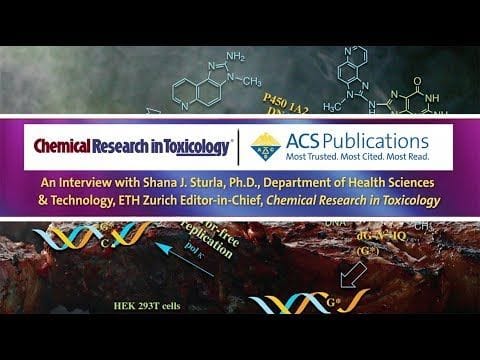In many ways, this was a year like any other for Chemical Research in Toxicology (CRT), a volume of diverse, exciting, important, rigorous research findings at the intersection of Toxicological Sciences and Chemistry in its 31st year. In other ways, it was a major event, with a new Editor-in-Chief—me!—and a team of Associate Editors coming […]

In many ways, this was a year like any other for Chemical Research in Toxicology (CRT), a volume of diverse, exciting, important, rigorous research findings at the intersection of Toxicological Sciences and Chemistry in its 31st year. In other ways, it was a major event, with a new Editor-in-Chief—me!—and a team of Associate Editors coming on board. I am the Professor of Toxicology at the ETH Zurich (Switzerland), and our Associate Editors are Kate S. Carroll (U.S.), Jiayin Dai (China), Annette Kraegeloh (Germany) and Yinsheng Wang (U.S.).
The field of toxicology has undergone a major shift in recent years, moving from being an observational to a predictive science. This concept has always been a central aspect of CRT. With advances in systems-oriented and in vitro approaches in toxicology, this concept has become more relevant to broader areas. Reflecting on 2018, I am thankful for how well the editorial team has come up to speed with the daily workings of the journal. This was no easy task, and sometime last winter, I even received a letter suggesting our names on the masthead to be in error! By spring we had really clicked, linking the complementary scientific perspectives, and with a view toward expanding the scientific scope and global perspective, over the last months our wonderful Associate Editors published a series of editorials introducing themselves:
- Yinsheng Wang, Interdisciplinary Approaches and Expanding Scope
- Kate S. Carroll, Chemical and Biochemical Mechanisms of Redox-Mediated Toxicology
- Jiayin Dai, Perspectives on the Study of Environmental Contaminants
- Annette Kraegeloh, Nanosafety Research
Our team places a high value in the concept that diversity and global perspectives make science better. Not only are we practitioners of research around the globe, but we have deep personal experience in how our own lives and careers have been shaped by multi-national and multi-disciplinary scientific experiences. Our advice to young researchers is to take advantage of opportunities without borders to engage with the CRT community and beyond. We also stress to young researchers and authors new to the CRT community the value of connecting the dots in science: understanding how concepts from different experimental approaches or scientific perspectives, and across different topic areas interconnect.
Looking forward to 2019, a great motivation for me is the high relevance of Toxicology. It allows fundamental scientific knowledge to enable new technologies and make a positive impact on public health and the protection of the environment. This perspective motivated another 2018 highlight for CRT: the creation of ToxWatch. ToxWatch articles pair an eye-catching poster graphic with short, accessible text to explore current issues in toxicology. We were excited that our ToxWatch concept was recently highlighted in an ACS axial series covering topics like these:
Aside from ToxWatch, we have many plans underway for promoting the visibility of outstanding CRT science, such as thematic special issues in 2019 on topics such as “Redox Pathways in Chemical Toxicology” and “Epigenetics in Toxicology.”
In closing, I take the chance to thank the incredible scientific community, authors and reviewers alike, who contribute their hard work and bright ideas to really make the journal. I wish you a peaceful close to 2018 and a spectacular 2019!

